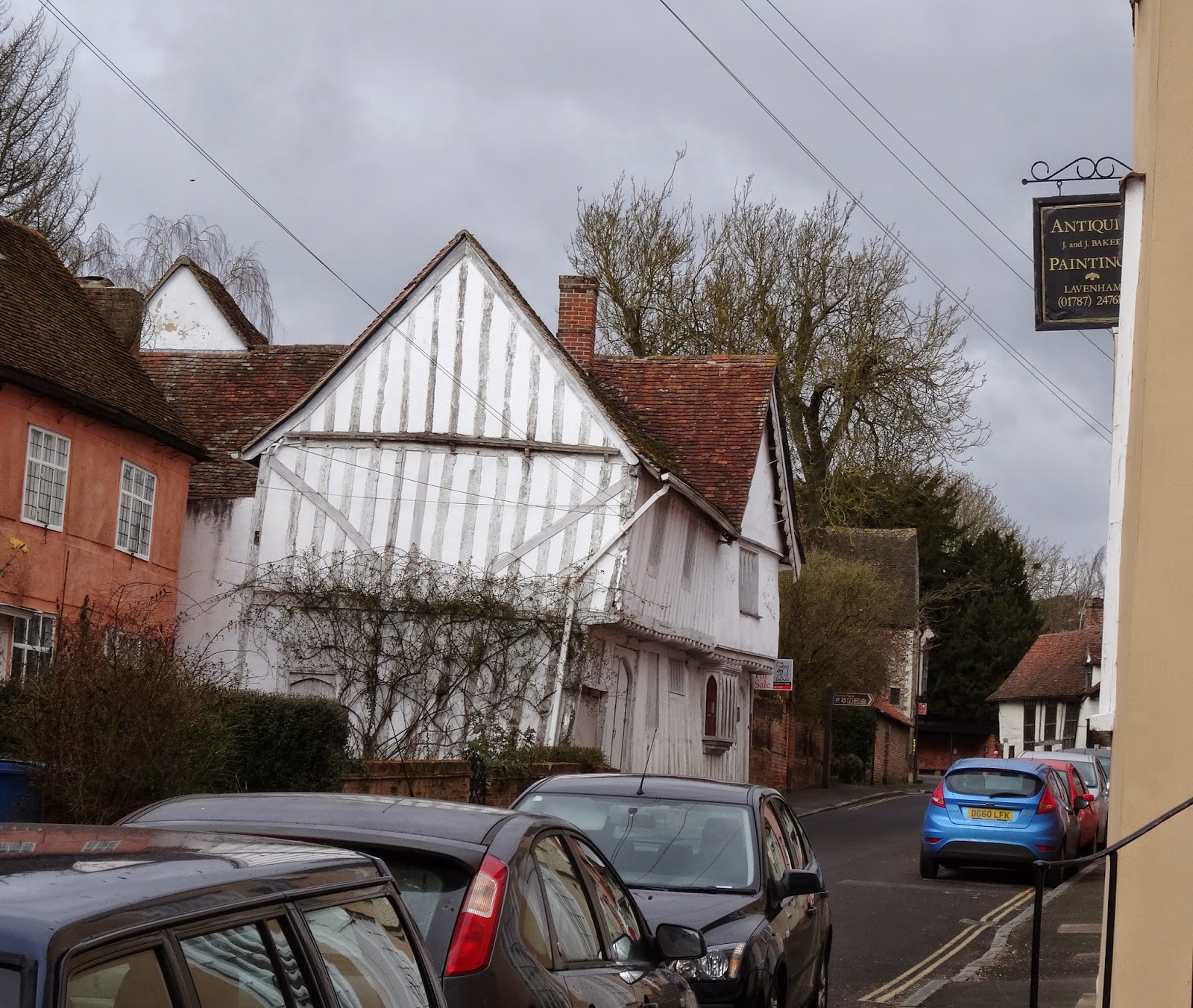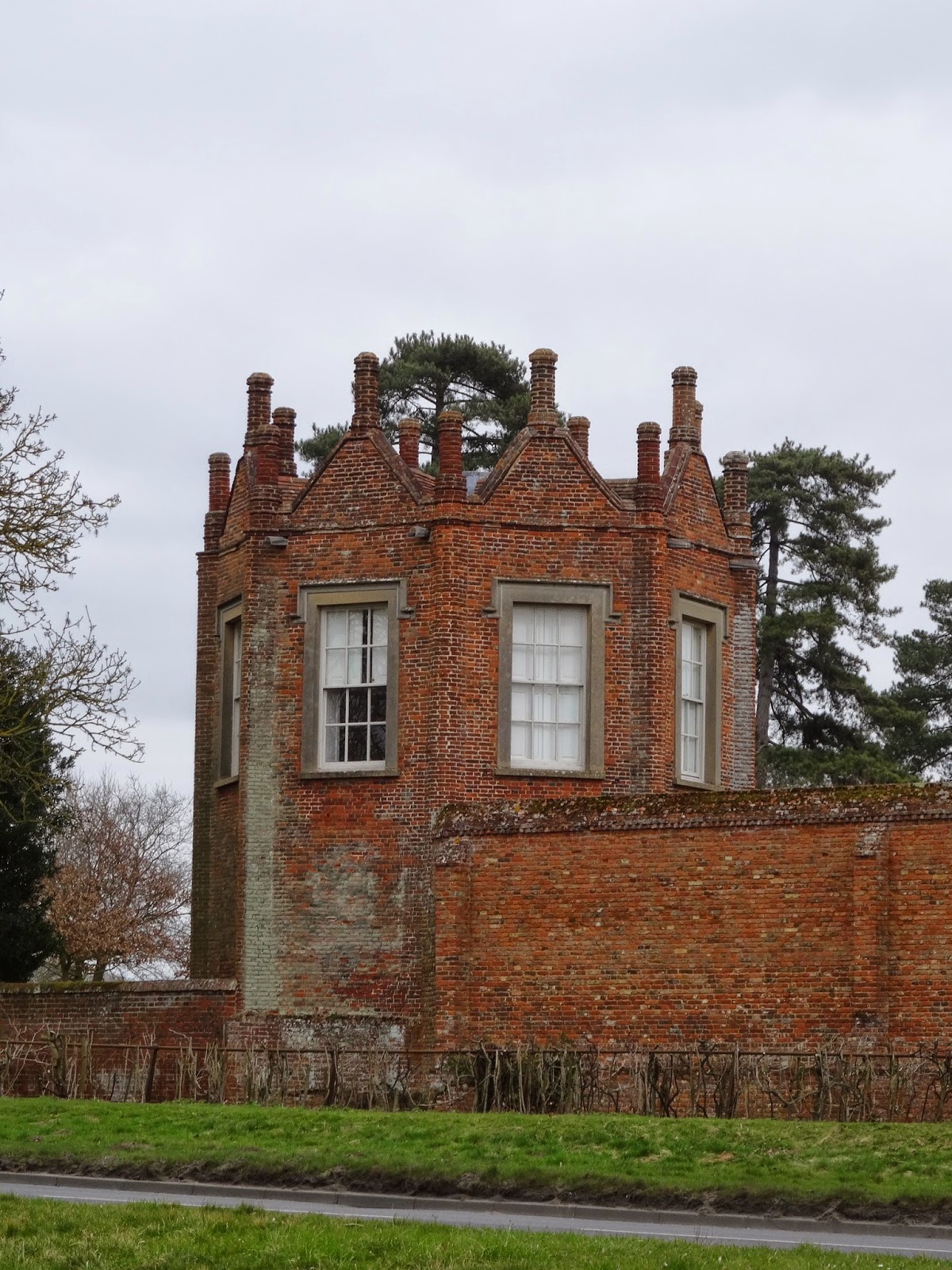In the afternoon we ended up in Long Melford - another Medieval town and like Hadleigh, essentially one long, very long in this case, street. Unlike Hadleigh the whole procession of the street reaches a summation in the village green and the spectacular parish church of the Holy Trinity. Like all churches in this part of the country it is an opulent display of the wealth generated by the medieval woollen industry. There are beautiful houses too along the western edge of the Green, the Trinity Hospital, and two country houses in close proximity: the austere Melford Hall (pictured) and Kentwell Hall, both built by wealthy clothiers. The green reminds me of the sort of area you find between Kew and Ham in West London. It feels definitely 'Southern'. Don't ask me to explain. I can't. The other part of the village, south beyond the bridge over the Chad Brook, is at times quite urban in feel - the scale of some of the buildings greater than those in either Lavenham or Hadleigh. It is the more work-a-day end of the village; there are warehouses and a maltings (now flats).
Holy Trinity is a massive church, nearly all the work of the late middle ages - the superb tower is much later: early twentieth century (1903) by the great G F Bodley, and is perfect. (I don't care what other critics say; it is just the right style and scale.) The exterior is covered with a tattoo of flushwork, some of it recording the names of all those who paid to rebuild the church. Unfortunately the church has lost its pinnacles. The interior is wide and spacious; remarkably we have some idea of what it looked like in before the Reformation because a member of the parish, Roger Martyn (Church warden 1554 - 1558), left a record of all that was lost. He even hid things in his own house to save them from the hand of the destroyer in a belief that they would eventually restored to worship. It was not to be. Much was lost but there are a considerable number of stained glass windows in the church surviving from the Middle Ages and they are really worth a closer study. Much more surviving glass than most other parish churches. H Munro Cautley in his book 'Suffolk Churches and their treasures' suggests that the glass was hidden too to protect it from zealots like Dowsing who made tours of East Anglia smashing up stuff they thought idolatry. As if to confirm this theory the English alabaster relief of the Nativity (below) was found buried under the chancel floor. There is also the intimate and opulent Clopton Chantry (must have been quite overpowering when complete) and the unique Lady Chapel. Usually the Lady Chapel (i.e. dedicated to the Virgin Mary) in an English Medieval parish church is formed in one of the aisles, only rarely, as at Long Melford, is there an (almost) separate building like you might find occasionally attached to a cathedral or abbey church. Obviously the parish of the Holy Trinity had pretentious to grandeur. That said it is a wonderfully beautiful and atmospheric little building with an interior of whitewashed walls, clear glass in the windows and a wonderful brick floor. Domestic is scale, it has a unique floor plan: the chapel itself is centred in the midst of the building with an aisle or 'ambulatory' running all the way around. This is not evident from the exterior - the three cables on the east wall suggest a basilican plan, i.e. nave and aisles. I particularly love the contrast between the warm russet red of the plain tile roof and the grey walls of ashlar and flint.





















No comments:
Post a Comment